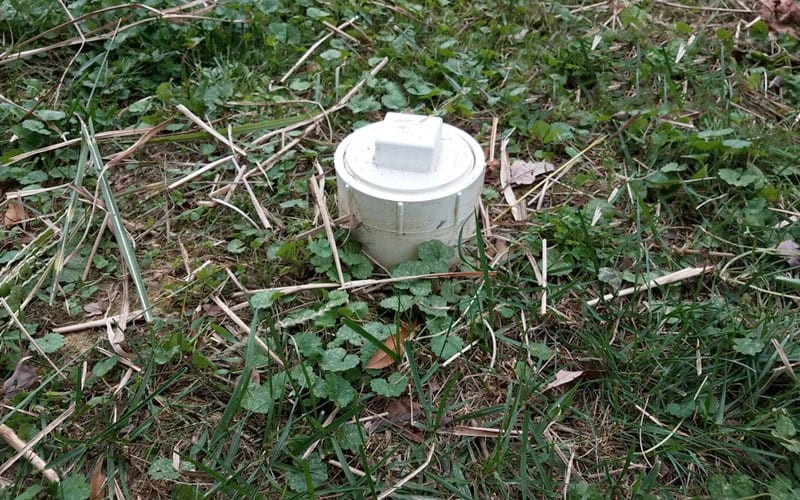A sewer drain cleanout is an essential feature of the drainage pipe system in your home. If a sink or a toilet is causing a blockage of the system which results in the sewage backup, then the cleanout is the only interface through a plumber that can unravel the mess. While a professional plumber can quickly locate the sewer line cleanout in many homes, the homeowner should stay aware of its location for emergencies. Note that the authorities usually take care of the main sewage line in the neighborhood but leave your compound’s systems under your care. Therefore, you should know the “sewer safety valve” location as it can help you remove obstructions on the system and avoid the dirty seeping on your floor.
How the sewer line cleanout works
A sewer line is a large pipe that connects every sink, shower, and toilet in your house to the municipal sewer line in the city. If one toilet, sink, or other facility causes a block on the septic line, all other facilities are affected, which calls for immediate action. Unblocking the sewer system is easy if you have a sewer cleanout in the house or the compound. Note that the service fee for unblocking the waste disposal system will partly depend on how easily a plumber can access it; you pay higher if there is no cleanout or don’t know its location.
Typically, a sewer drain cleanout is a sizeable threaded pipe ending with a plug. The tube can either be metallic or plastic depending on factors like the area of residence and the weather. Moreover, its house or compound location is also influenced by factors like the weather and the house’s materials. For instance, homes in localities that experience cold weather often have sewer cleanouts near the bathroom, toilet, or garage.
Where is my sewer cleanout located?
A homeowner has various options when they need to find the cleanout. A sewer cleanout is a safety feature among the utilities. One should always know their location from the day they move into a house. However, it is easy to identify the cleanout, and sometimes you do not need professional help. That is not always the case since there are times when the cleanout is buried in the compound. Here are the various ways to locate a sewer drain cleanout.
- Examine the likely locations –The first way involves looking around in the house and the compound in places where you would expect the facility to be installed. A cleanout is a 3- or 4-inch pipe fitted with a screw cleanout cap, and it is easily identifiable. Therefore, looking around the compound is one way to determine its location. In most homes, the cleanout is located close to the bathroom, either inside or outside the house. However, this is not always the case, and your neighborhood may be different. Therefore, you should not panic if you do not find it anywhere near the bathroom. Other probable places to check include the garage area, in the basement, or near the pathway right outside the house. If the sewer cleanout access is located in drywall, you should take care and avoid cutting other pipes, cords, and cables, or you could cause a tragedy in the home.
- Grab the house plan – Sometimes the eyes may not be enough to tell where the lateral sewer line cleanout is located. In such a case and where the house plan is readily accessible, it is plausible to get it and try finding the facility from there. The advantage of using the plot plan is that all other features and facilities are documented in it, making it easy. Identifying your house’s sewer line is the first step to locating the sewer drain cleanout. Take care and avoid confusing other facilities with the main sewer line as this may have adverse effects if you damage other systems in the process. As mentioned before, the sewer cleanout could be buried in the compound instead of located inside the house.
- Professional services – In some cases, observing the compound and looking at the plot plan does not yield any results. This could be the case for old houses or those whose plans are poorly done or the case of a buried sewer cleanout. Therefore, calling a professional service may be the only option. You can quickly locate the outdoor cleanout access with expert help regardless of whether it is inside the house, sticking out, or buried in the compound. Plumbers have the tools and expertise to trace, replace, and repair parts of a drainage plumbing system. Whether that’s using a modern technique called trenchless sewer repair or using variety of other ways to unclog your sewer, you can always be confident with their expertise. They can also discern why your drainage system is often clogging and give you professional advice on the same. Furthermore, professional plumbers will cause little or no damage when finding the sewer cleanouts. Even better, a plumber may fix any damages caused on some walls if the sewer cleanout was underneath one. One other advantage is that a plumber can install the lateral sewer line cleanout if there is none in the compound. And even though this adds to the service cost, it is well worth it unless you will be moving out of the house the same day.
Taking care of the drainage system in your house
What can you do to prevent the drainage system from clogging? You know the pain of dealing with a clogged drainage system if you ever experienced one. For people who are yet to, you’d better take precautionary measures before it is too late. Below are some practices that can prevent or reduce clogging of the drainage system in your home.
- Use hot water frequently – Hot water is known to kill germs but is also a remedy for clogging pipes as well. Cleaning the sinks with boiling water melts out oils and detaches food items from the pipes’ walls, thus getting them into the street’s central sewage system. Therefore, you should make a point of cleaning the sinks, bathrooms, and toilets with hot water frequently.
- Use drain guard on every sink – In some instances, the drainage pipes will block because too many food items find their way in the lines. Having a drainage guard on every sink in the house reduces the size and amount of foodstuffs entering the drain. With this tip, you will also need to avoid dumping non-dissolvable waste in the sink or bathroom.
- Routine maintenance – Routine maintenance is the best way to stay out of trouble with drainage systems. Every homeowner should ensure that the drainage system is inspected by a professional plumber at least once a year. Possible problems that then be identified and resolved before the drain blocks. This does not only save you money eventually, but it also ensures your system is in the best condition at all times.
Conclusion
Knowing the location of the sewer cleanout in your compound is of great importance. Besides helping you reduce the cost of sewer line repairs and maintenance; it can help you keep the drain clean through DIY activities and regular inspections. Most houses have the sewer drain cleanout on the inside near the bathroom. If you cannot find the sewer cleanout by observing the house and the compound, then looking at the house plan or calling a professional plumbing service could be the salvation.
Above all other things, it is vital to keep the drainage system clean and healthy at all times. For more information on sewer line cleanout, contact our experienced plumbers today.




